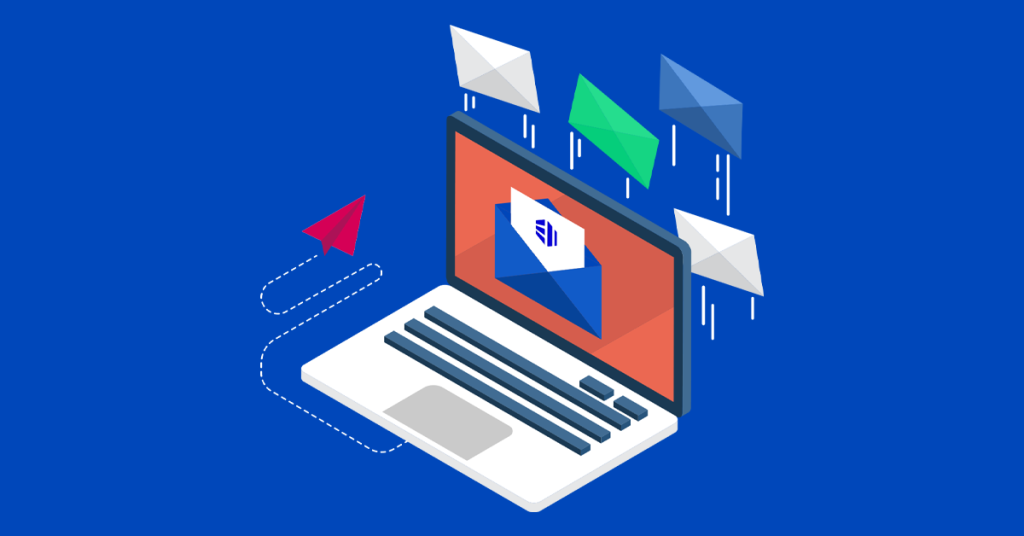When it comes to using email, there are two main protocols you can choose from: IMAP and POP3. Essentially, these protocols are a set of rules that dictate how email messages are transmitted and received between servers and clients (the software you use for email). While both act as a way to retrieve emails from a server, they have vastly different functionalities. In this post, we will look at both protocols, explaining the advantages of IMAP for businesses and why it’s a better choice than POP3.
Understanding POP3
POP3 is essentially a method for downloading emails from the server to the user’s computer or device. Once these emails are downloaded, they are typically deleted from the server. This means that if you access your emails from different devices, for example, your computer and your phone, you won’t see the same emails everywhere because, once deleted on the server, they will only reside on the device to which they were downloaded.
There are some advantages to POP3. For instance, as emails are downloaded and removed from the server, it can help to conserve server space – which is useful if you have email storage limits. What’s more, reading emails doesn’t require a continuous internet connection once they’re downloaded. However, for modern businesses that rely on flexibility, collaboration and accessibility, POP3 falls short.
The advantages of IMAP
The key difference between POP3 and IMAP is that with IMAP, instead of downloading emails, they are merely read from the server. This brings quite a few advantages for businesses:
- Sync across all devices
With businesses increasingly adopting flexible working patterns, employees often switch between devices to access their email. They may use workstations in the office, laptops at home and mobiles on the go. With IMAP, every email is synchronised across all devices. If you mark an email as read, flag it, move it to a folder or delete it, the action will happen on every device. This brings continuity, which is invaluable for businesses, and it removes the countless headaches that you can get with POP3 when you cannot access emails that have been downloaded to other devices. - Server-side organisation
Another advantage of IMAP is that it allows users to set up and organise folders on the server itself. This means that if you create a folder structure to categorise your emails on one device, it will appear the same on every other device. This level of organisation is beneficial for teams collaborating on projects, ensuring everyone knows where to find emails and their attachments and that messages can be easily organised. - Better recovery
Emails can get accidentally deleted, but with IMAP, there’s less of a panic. Since emails are stored on the server until deliberately deleted (or until they meet expiration policies), you can recover them even if they’re mistakenly removed from a particular device.
With emails staying on the server, businesses don’t need to worry about device failures. Emails are centrally stored and can be backed up efficiently from the server side, ensuring data integrity and reducing the risk of data loss. - Bandwidth efficiency
IMAP enables users to partially download email content. Instead of fetching the entire email, IMAP can retrieve just the headers or a part of the email content, saving on bandwidth, which is particularly useful when accessing emails in areas with slow or limited internet connections.
Conclusion
When comparing IMAP and POP3, IMAP is clearly the better option for businesses. While POP3 might be useful in situations where server space is a primary concern, IMAP offers the flexibility, synchronisation and assurance that modern businesses require. It provides better opportunities for remote workers and collaboration while reducing the potential for data loss and making device failure less of an issue.
About eukhost email solutions
eukhost’s fully featured Business Email Hosting is a solution tailored for organisations seeking reliability, ease of use and robust security. Clients are able to establish multiple @yourdomain email accounts, set up autoresponders and configure forwarders and mail rules with ease. They also benefit from calendars, contacts and tasks features, and can access emails via popular clients like Outlook or by using webmail.
Clients have constant email accessibility, and benefit from SpamExperts enterprise-class spam protection together with automatic virus scans, to ensure a malware and virus-free environment for their business.
Perhaps, even better, email hosting comes free with a wide range of our hosting plans. However, if you wish to purchase email hosting on its own, that’s also an option. For more information visit our Business Email Hosting page.


